Genre: Survival Horror Developer: Capcom Publisher: Capcom Players: 1 Released: 2000
Fans of the Resident Evil series are eating well these days, with Capcom feeding them a constant buffet of remakes and new installments. The blocky, tank-controlled versions of the ’90s have been cast aside and replaced with gorgeous updates that have helped finally realize the series’ full horror potential and bring newer generations of games up to speed on the horrible tale of Umbrella’s nefarious viruses. Indeed, it’s a good time to be a lover of all things Resident Evil.
That is, unless you’re a fan of Resident Evil: Code: Veronica, a game that could easily have been a numbered entry in the series. In fact, Code Veronica was initially intended to be the next major Resident Evil release but was rebranded due to an exclusivity deal with Sega, which led to Resident Evil 3 taking its place. Despite this, creator Shinji Mikami lamented that Code: Veronica deserved the full recognition of a numbered title, as he considered to be of higher quality since its fully-rendered, 3D environments showcased the Dreamcast’s cutting-edge technology for its time. Code Veronica thus became an exclusive for Sega’s console, giving its fans their first taste of an original Resident Evil title, complete with the chilling atmosphere and classic survival horror gameplay they’d come to expect and with all the next-gen bells and whistles Capcom could muster.
Set three months after Resident Evil 2, Code: Veronica follows Claire Redfield as she infiltrates Umbrella’s Paris headquarters but is soon captured and taken to Rockfort Island. The game’s open-ended island setting, a departure from the confined spaces of previous titles like the Spencer Mansion or alleys and corridors of Raccoon City, made the gameplay more open-ended and exploratory and was a welcome change in atmosphere. Some people think the cut scenes and dialogue have aged poorly, with their exaggerated voice acting, but hasn’t that always been a staple of the series? I think they contributed to the game’s campy charm.
Let’s get one thing out in the open right now: The outdated tank controls and stiff character movement weren’t improved at all for this release, making navigation just as cumbersome as we all remembered from the previous games. Instead, Capcom bet that what would truly set Code: Veronica apart from its predecessors would be its shift from pre-rendered to fully 3D environments, a change that would bring a new sense of depth and atmosphere. Gone were the static backgrounds, replaced by dynamic camera angles and real-time lighting effects that enhanced the game’s foreboding mood. Whether it was the flickering light from a swinging lamp or the fiery glow from a burning zombie, the lighting effects were intricately designed to add layers to the unsettling experience. However, despite these improvements, the game didn’t abandon the series’ core aesthetics — the horrific and nightmarish environments remained as eerie as ever.
Despite the tank controls, Capcom did introduce some refinements to Code: Veronica’s classic survival horror gameplay, and the gameplay mechanics included enough small enhancements to distinguish this entry from its predecessors. For instance, one notable improvement was the collision detection system, which prevented players from swinging their weapon aimlessly through walls. It only took three installments for characters to learn that they can’t swing a knife or pistol through a solid wall… better late than never! This minor, but significant, detail helped quite a bit with combat, which remained tense and resource-driven, with ammunition scarce and the traditional Resident Evil inventory management returning. Yes, you still ran around with a pocket full of typewriter ribbons, and you probably still ran out bullets at the worst time.
Another subtle, yet impactful, improvement came in the form of the game’s use of Sega’s Visual Memory Unit (VMU). The VMU allowed players to check their character’s health without pausing the game, a minor but clever innovation that helped keep players immersed in the game’s tension. I would have liked to see more games use the VMU for things like this; it was an underused feature that made the Dreamcast stand out a bit more against its competition.
However, not everything about Code: Veronica was so refined. As I mentioned, the game retained the series’ hallmark “tank controls,” which, though nostalgic for veteran players, felt increasingly archaic by 2000. Moving Claire was clunky and rigid, akin to steering a cumbersome ship rather than controlling a nimble character. This stiffness extended to combat, where players found themselves awkwardly pivoting their character to face enemies, especially when surrounded. The inability to move and shoot simultaneously—an intentional design choice to prevent the game from becoming a run-‘n-gun experience—further highlighted Capcom’s dated control scheme. You would think that by the time the Dreamcast rolled around, with Capcom on its third entry in this series, some kind of evolution in the control scheme would have occurred. Sadly, we would have to wait a bit longer for such a change to be implemented.
Additionally, the save system also remained a divisive aspect of Code: Veronica. Following the series’ traditional typewriter-saving mechanic, players had to find ink ribbons scattered throughout the game world to save their progress. This design choice was another example of the design starting to show its age. I know it was meant to reinforce the tension and stakes of survival by making it harder to save and feel “safe,” but it could be frustrating when real-life interruptions forced players to abandon their game mid-progress. With save points few and far between, the game could sometimes feel unforgiving, even punishing. I think Capcom could have balanced this better by offering more flexibility without compromising the tension that comes from resource management and careful planning.
Finally, Code: Veronica faltered in its character animation and voice acting. While the game’s visuals impressed overall, I think the character models and animations were a bit stiff and unrefined by next-gen standards in 2000. It possibly has something to do with the game’s Saturn origin, but Capcom had this one on a slow burn for several years, and the animations didn’t always match the quality of the environments. Additionally, the voice acting often strayed into the realm of unintentional comedy. We all know that Resident Evil was no Grammy contender for its voice acting, but Code: Veronica was out to win a Golden Raspberry award for worst acting. Alfred Ashford, a major antagonist, stood out as particularly cringe-worthy with his over-the-top, exaggerated dialogue delivery. I still believe that the voice work added a certain charm to the series overall, but I admit that there were occasions where it detracted from the gravitas of the story, which tried to be taken seriously.
Nevertheless, Code: Veronica excelled in its overall atmosphere. It set out to bring Dreamcast owners a Resident Evil title for the next generation, and I think it accomplished that goal. The game’s pacing and resource management combined to build an ever-increasing sense of dread, and, true to the franchise, players were constantly on edge, fearing what might lie around the next corner, unsure if they had enough ammunition or health to survive the next encounter. The combination of neat features like dynamic lighting, innovative use of the VMU, and a sprawling, gothic setting ensured that Code: Veronica lived up to its heritage to deliver a memorable and tense survival horror experience.
Ultimately, Code: Veronica remains a significant title in the survival horror genre, combining innovative 3D environments with established Resident Evil mechanics. Despite its occasional mechanical shortcomings and dated voice acting, the game offered an atmospheric, nerve-wracking experience that stands the test of time. Capcom’s ability to maintain the core tension of survival horror while expanding the scope of the series in new directions showcased the game’s ambition and lasting influence within the franchise. Indeed, people are still clamoring for a remake today. It’s a shame that Capcom unleashed this classic so late in the Dreamcast’s lifespan. Far too few people got to experience just how cool it was to play a true sequel on Sega’s little wonder console.
SCORE: 8 out of 10

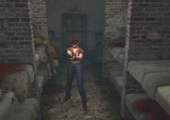
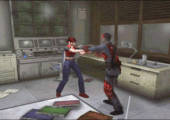
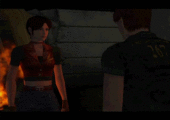
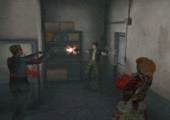
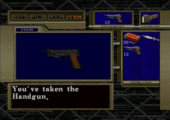

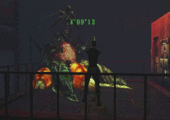
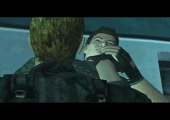
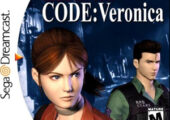
Recent Comments